In the United States, the average convention center features over 227,000 square feet of exhibit space. That’s over five acres of exhibits, all competing for the same eyes. If you’re looking to stand out from the pack and maximize your ROI, you want to consider your custom trade show display options.
A custom exhibit integrates your logo and brand with eye-catching graphic design. When it’s done right, your audience understands your brand immediately. That’s because customizing your trade show booth goes beyond fonts and logos and color (although those are important, too!), allowing you to truly communicate the tone and personality of your brand through layout and structure.
Of course, a great display is only one part of the equation. To truly stand out at your next trade show, you need to know two things:
- What does your audience want?
- What do you want?
Before we dive into the benefits of custom trade show booths, we need to look at the importance of understanding why you and your audience are there.
Why Do People Attend Trade Shows?
Trade Show Executive and Experient partnered to conduct market research into why people attend trade shows, host displays, and more. Their findings are interesting:
- 69: The percent of attendees shopping for new products
- 66: The percent of attendees looking to increase their professional knowledge
- 8.3: The average number of hours attendees spend viewing exhibits
You may have guessed that first bullet, but did you consider that two-thirds of attendees were there for professional learning? They want to learn about their industry, innovations, new products, how to be better at their jobs – all the same things you pursue in your own professional learning endeavors.
If one of your goals is building brand awareness or establishing your position, educating your audience creates a prime opportunity for you to really build relationships with attendees, which is a key component of closing sales.
What Are Your Trade Show Goals
There are a lot of reasons that people set goals but first and foremost is that it’s nearly impossible to accomplish anything if you don’t know what you want to achieve. How many people “accidentally” lose 20 pounds, or find a new job, or get a promotion? (If that describes you, give us a call. We’re dying to know your secret.)
Knowing what you want to accomplish with your trade show exhibit helps ensure you don’t waste those valuable marketing dollars. It’s also a big help to your design team, who use their understanding of what you hope to accomplish to create a booth that effectively tells your story.
Typically, objectives fall into one of three categories:
- Communication: Includes building brand awareness, promoting your message, and introducing a new product or service
- Logistical: Includes demonstrating new equipment and products, attracting attention, and increasing flow to your booth
- Quantifiable: Includes generating leads and sales, identifying new partners, and recruiting new employees
Knowing your objective focuses the entire design toward achieving that goal. For example, if your goal is building brand awareness, what impression do you want trade show attendees to have? Is your branding consistent throughout your marketing platforms (from web site to booth to promotional materials)? Every item in your booth should work toward achieving your goal.
Considerations For Common Trade Show Objectives
The three most common goals companies have for their trade show booth are building brand awareness, generating new leads and sales, and launching a new service or product.
Building Brand Awareness
When your goal is building awareness of your brand, maintaining consistency throughout your display, promotional materials, and website is extremely important. You need to be aware of the impression you create with your audience and work to create a memorable experience. You also want your booth to stand out, from both neighboring booths and direct competitors.
Generating New Leads & Sales
If your main goal is generating leads and sales, eye-catching design may be the most important element of your display. You need to draw people into your booth, so consider a hook that grabs their attention as they walk the exhibit floor. It also helps to start grabbing their attention before the event. Send out invites that let people know you’ll be there and don’t forget social media. Most events include hashtags as part of their own social media campaigns, so take advantage of these to advertise your presence across multiple platforms.
Launching A New Product or Service
When launching a new product or service, you need to incorporate demonstrations or presentations into your exhibit, or a model or samples of the new product. Consider the best visual approach and whether you’ll have any special requirements for the venue itself (extra power needs, refrigeration, etc).
Why Design A Custom Exhibit
Now that you understand what your audience wants, and understand what you hope to accomplish with your exhibit, you’re ready to work with your design team to create a custom exhibit.
Your display is often attendees’ first experience with your company, and you know what they say about first impressions and second chances. Don’t get us wrong; you can do a lot with rented modular or tension fabric displays. There’s no denying, though, that a custom trade show booth helps you make a lasting impression, and grabs their attention so you make a great first impression, too.
By the way, custom does not have to mean flashy. The best booth is the one that tells your story and communicates the message you want people to hear.
Embrace Your Brand
You want attendees to remember your brand long after the event ends. That means that you need to incorporate all aspects of your brand: logo, language, images, and color palette. A customized display allows you to capture all of the elements of your brand, even the personality and tone you want to convey. Layout and structure help tell your brand story – playful, innovative, tech, casual, conservative – whatever your brand’s story is, a customized booth helps tell it.
Be Bold
A custom booth allows you to make bold design choices to really grab the attention of passersby, and maybe even generate a little buzz. Note that “bold” doesn’t necessarily mean “big.” It can, if that’s the direction you want to go, but bigger isn’t always better.
Get Creative To Stand Out
With enough imagination, display possibilities are practically limitless. You can use a basic backdrop if that represents the best way to tell your story, but you can also go far beyond that to create an immersive experience, such as the display we created for Best Western, or use shape and form to highlight a product or inspire a particular emotion in your audience.
Location, Location, Location
Choosing the right location is about more than landing the best spot on the exhibit floor (although that’s important, too). Instead, this is about choosing the best trade shows, the events where you’re more likely to find your target audience and generate quality leads. A lot of people focus on their industry’s biggest events, but you may find more quality leads at smaller, more focused shows.
Floor location preference tends to vary according to who you ask. Some people like a spot right close to food and beverage areas, others prefer corners, and others only care about being near their main competitors. Whatever your preference, make your reservation as early as possible. Many regular exhibitors reserve their spot a year in advance.
What Happens In The Booth?
Hopefully, you staffed your display with the right kind of people. Unfortunately, there isn’t a single “type” that’s right for your booth; it all depends on what you’re trying to do. There are, however, some great guidelines on selecting the right booth staff.
Remember, these people represent your brand, so you want a dynamic, energetic, and knowledgeable team capable of answering any questions about the product, service, or your brand in general. They should be friendly and not afraid to ignore Mom’s advice about talking to strangers. Staff shouldn’t wait for attendees to enter your booth, they need to be willing to step into the aisle and engage people. At the same time, you don’t want your staff to be too aggressive in their tactics, or you’ll find attendees avoiding your booth like the proverbial plague.
It should go without saying that they need to be reliable; don’t choose the guy with attendance issues. Appearance also matters. That doesn’t mean that your booth staff needs to look runway-ready, just that they need to be clean, neat, and appropriately dressed.
Look for staff capable of asking good questions so they understand the prospect’s pain points (and how your product solves them). Anyone who seems to speak nothing but Marketingese (more corporate-speak than English), isn’t a good fit. It’s also a good idea to avoid the office pessimist (we call them Negative Nelly and Gloomy Gus), who tend to bring down everyone around them.
If your goal is generating leads and sales, you probably want a couple of hungry reps. Be careful, though, to choose reps who’ll report those leads as coming from the show, otherwise you’ll never have an accurate picture of your ROI.
Your Job Doesn’t End with the Pitch
No matter what your goal is, no matter how great your custom exhibit is, it can only do so much. Your lead interaction doesn’t end with the pitch. You need to follow up with all prospects and do it as quickly as possible.
Once you draw quality leads into your booth, collect their contact information (your swag and giveaway items come in handy here). Use whatever method works best for you, such as collecting business cards or having them complete a form or enter their information into a tablet or computer. Add any relevant notes as quickly as possible, so you don’t forget. Maybe John Smith asked specifically about the warranty on parts, or Mary Jones wondered about delivery options. Whatever questions or interest you remember from the interaction, write it down.
You need this information for the second step: following up with those warm leads as quickly as possible. Who cares if you collect 1,000 email addresses if they never hear from you again? Remember, your competitors were likely at the same show, so the sooner you do this, the better. You can do it in the evening, back at your hotel, or you can wait until you get back to the office. It’s okay to create a form email, but personalize each one before sending (this is where those notes come in).
This follow-up step is also one of the easiest ways to determine how successful the event was, and whether the ROI justifies the time, expense, and effort trade shows require, and which ones are worth it.
Bringing It All Together
A custom trade show display helps you stand out from the competition, but it’s only one part of a successful event experience. You need to understand what your audience wants, set your goals and objectives for the show, staff your booth with the right people, and follow up with all of those great leads. When you nail each of those components, the rewards fully justify the time and effort, not to mention the expense, of your trade show experience.
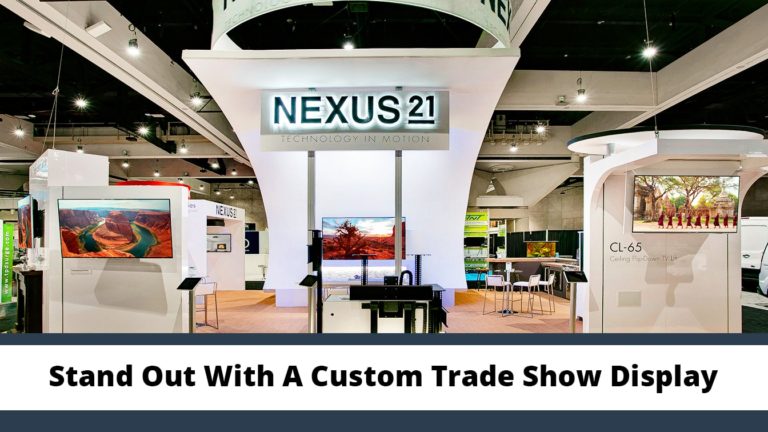
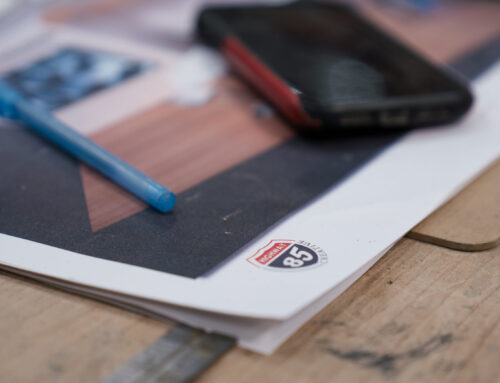
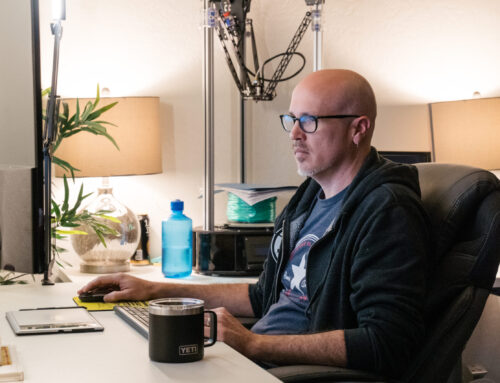
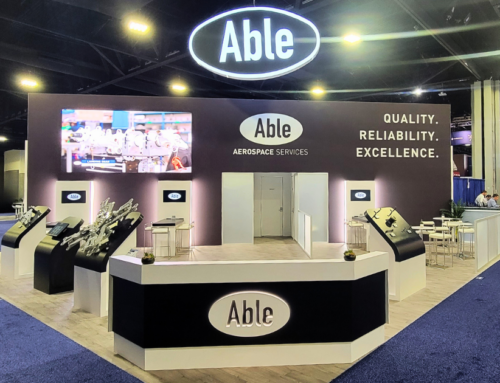
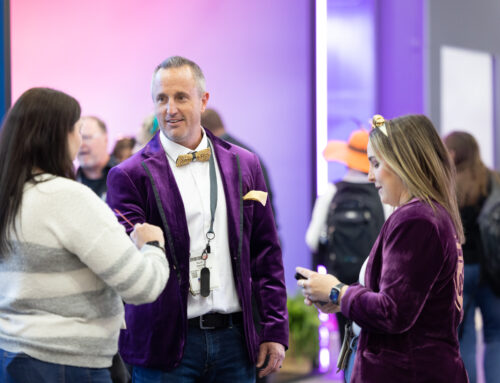
[…] you design your booth, you most likely will have to design the other items separately, but with a similar design. We used […]
[…] you design your booth, you most likely will have to design the other items separately, but with a similar design. We used […]